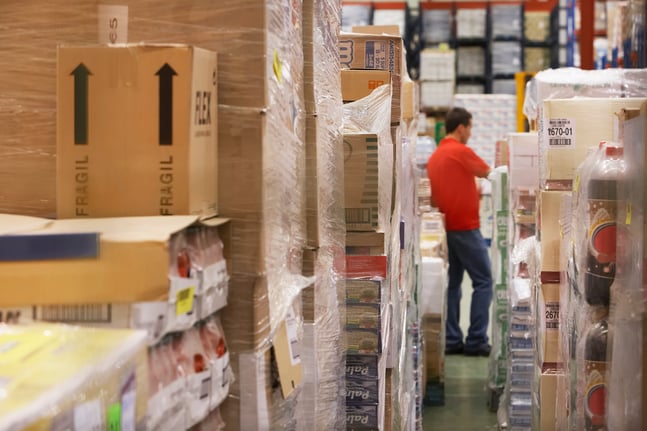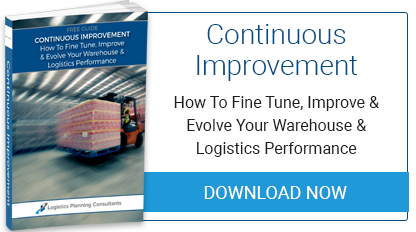
Your warehouse is the hub of your supply chain and arguably it’s most important part, but it does not exist in isolation. No strategy to improve your warehouse will succeed without simultaneously looking at how it fits in with other elements of your logistics operation.
If you are preparing to expand your business, or simply looking to future proof your business by incorporating a more positive attitude towards change, we suggest implementing a warehouse and logistics improvement plan.
When finished, this plan will give you a complete overview of your business as it stands, helping you understand your strengths, weak spots and opportunities. However, a good improvement strategy will be more than a snapshot of your current supply chain. It will also provide a blue print for adaptation, expansion and change management.
Here are some simple steps you can take to make a start today:
1) Evaluate Your Current Operation
The first step on the road to improvement is taking a cold, hard look at your current facilities and processes. Create an accurate floor plan of your warehouse, showing layout and storage facilities. You should then take an inventory of all your equipment and vehicles, including your logistics fleet. Next comes an HR assessment. Work backwards from processes rather than people. Set out all your current warehouse processes and procedures, then link them to staff responsibilities and finally to named individuals. This will give you a comprehensive overview of all your resources and capacities.
2) Determine Your Inventory Requirements
Next, assess your stock and inventory needs. Make a note of your current volumes of stock, where it is stored and your current stock turn. Tie this in with the previous step, where you will have already analysed your ordering, material handling and storage processes. How do you accurately assess inventory stock turn? How do you store and manage warehouse data? Comparing your resources with the needs of your business allows you to progress to stages three and four, where you identify weaknesses and opportunities.
3) Identify Gaps In Capacity
You should now be able to see where your weaknesses are, i.e. where your resources fail to meet your inventory and throughput requirements. Identifying your weaknesses is a positive step, as each weakness presents an opportunity for improvement. List all your areas for improvement and prioritise them in order of importance. You may find your infrastructure needs upgrading, or you may need to reorganise your warehouse layout, or implement changes in or procure a new WMS.
4) Identify Opportunities For Change
Analyse your current processes and procedures. To what extent do they enable you to reach your business goals, and to what extent do they contribute to the weaknesses you have identified? Can improvements be made? You may be able to find alternative solutions that allow you to save costs or reduce errors. Many businesses include a plan for reorganising their workforce; improving productivity and setting out guidelines to support their warehouse team achieve their KPIs.
5) Determine The Cost Of Improvement
Steps three and four will yield many opportunities for change. However, what do all these improvements cost you and what return will you get on each? When considering the total cost, analyse each improvement qualitatively and quantitatively. For instance:
- How much will the improvements cost?
- How much time will they take?
- How much is this time worth in monetary terms?
- Will productivity be impacted while improvements take place?
- Is there a risk of inventory damage?
- Is there a risk that your service levels will be adversely affected during the change and what is that cost?
- What are the health and safety implications?
- How will you adjust to the changes?
- How will the improvement plan be managed, and by who?
6) Review Your Plans
Having considered the financial and qualitative impact on your business, you can now look back and review your plans if necessary. Prioritise the improvements you want to make first and shelve any that are impractical. For each change, note the impact on space, personnel, procedures, productivity and equipment, with all associated time and monetary costs.
Creating Your Warehouse And Logistics Improvement Plan
After you have worked through the six steps, you will be ready to create a formal improvement strategy for your supply chain. Many businesses find it useful to seek professional advice at this stage, as it helps reveal any blind spots and opportunities you may have missed.
Claim A Free Copy Of Our New E-Book
For more information about warehouse and logistics improvement, download our free guide to Continuous Improvement: How To Fine Tune, Improve & Evolve Your Warehouse & Logistics Performance. You can also chat to one of our consultants for bespoke advice about an improvement plan that fits your business strategy. Call us on 01285 640 038 to find out more.


